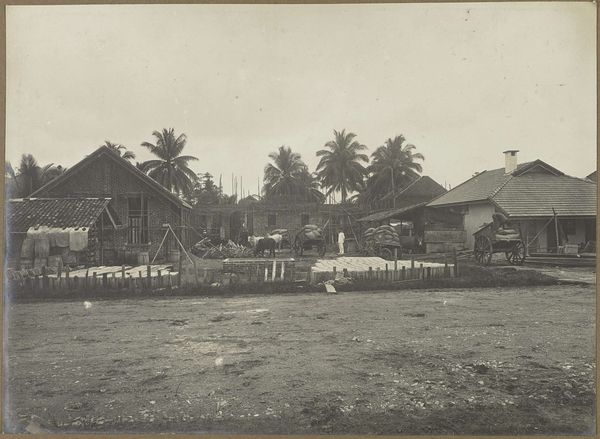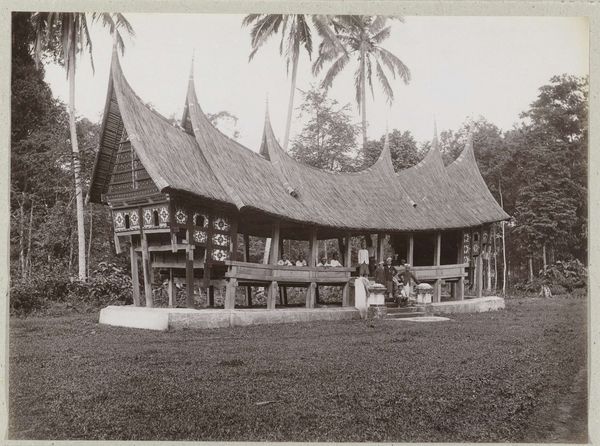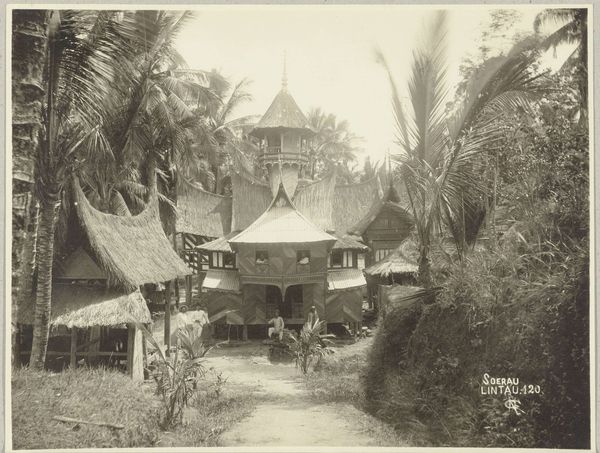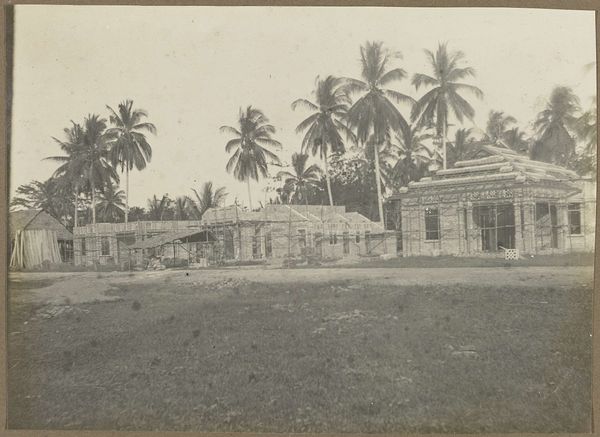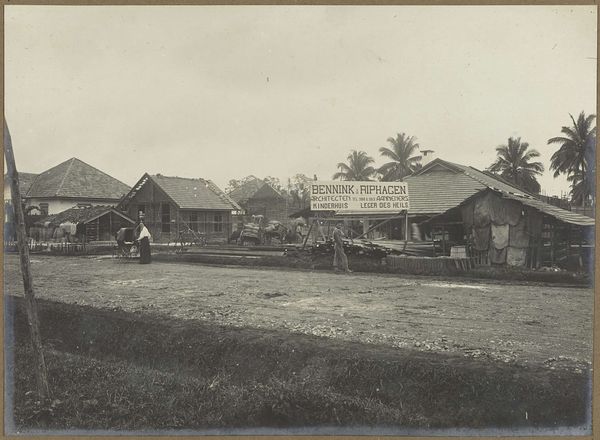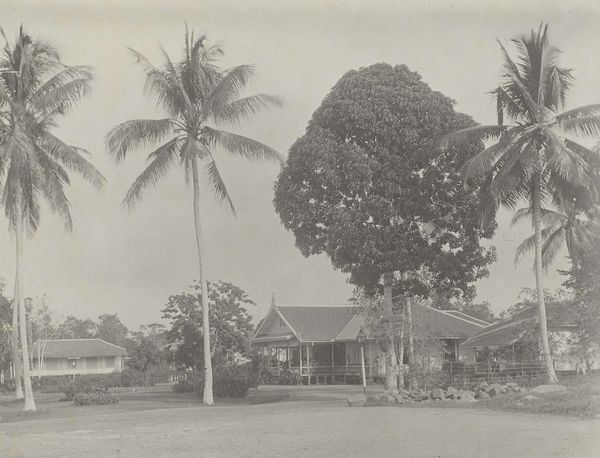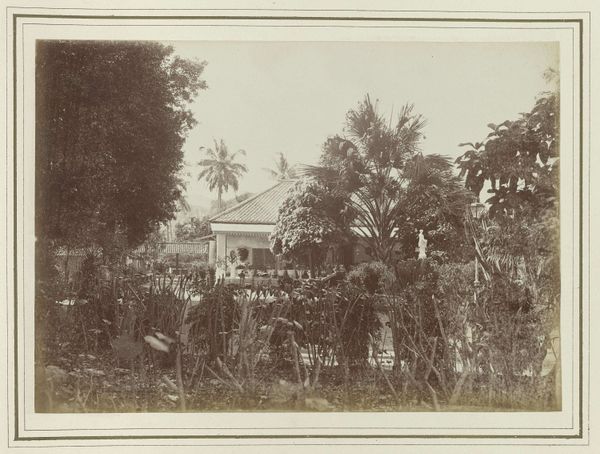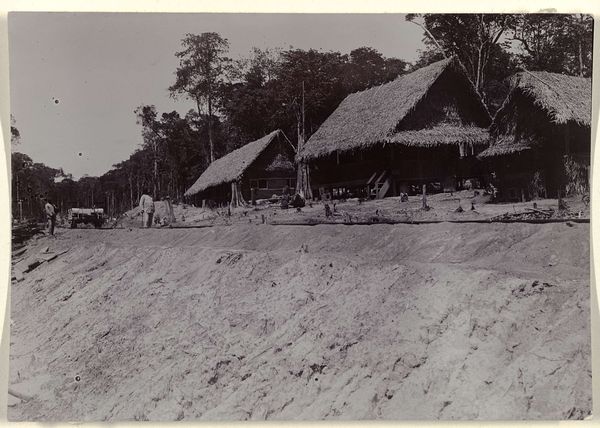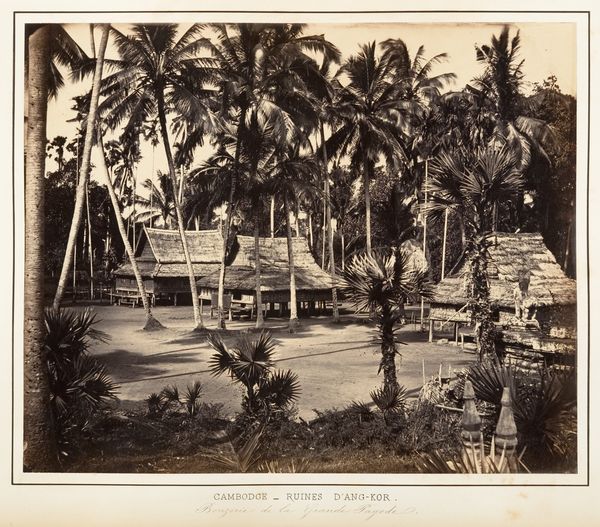
Vijver en Minangkabauer huizen bij Bukittinggi 1891 - 1912
0:00
0:00
christiaanbenjaminnieuwenhuis
Rijksmuseum
photography, gelatin-silver-print
#
black and white photography
#
asian-art
#
landscape
#
indigenism
#
photography
#
gelatin-silver-print
#
monochrome photography
Dimensions: height 209 mm, width 276 mm
Copyright: Rijks Museum: Open Domain
Curator: Well, this print has a serene quality. So restful. It almost makes you want to jump into it, doesn't it? Editor: It does invite reflection. We're looking at Christiaan Benjamin Nieuwenhuis’s gelatin silver print, “Vijver en Minangkabauer huizen bij Bukittinggi”, or “Pond and Minangkabau houses near Bukittinggi.” It was taken sometime between 1891 and 1912 and resides at the Rijksmuseum. It really showcases architectural and cultural identity. Curator: You know, the pond reflecting those striking, steep roofs…it's like a whispered secret of Southeast Asia right there. Did Nieuwenhuis realise how poetic it was? Editor: Colonial-era photography like this presents complexities. While offering a visual record, it can also be a form of cultural documentation imbued with the photographer's perspective and power dynamics. I mean, think about the implications of "capturing" a culture in that time. Curator: Ah, the capturing bit, yes. But putting that aside for a second, imagine being there... that quiet murmur of daily life, everything in grayscale. I wonder what stories those buildings could tell. Editor: Precisely. The architectural style is specific to the Minangkabau people of West Sumatra, and those distinct rooflines—are not mere decoration but symbols of social structure, ancestral lineage, and communal identity. What’s going on *inside* those spaces matters as much as their picturesque facade. Curator: And those shadows lurking, all dark and mysterious, beneath the eaves. The stillness almost hints at some untold history playing out. Editor: The monochromatic aesthetic reduces distractions, which heightens focus on textures, compositions, and spatial relations, offering viewers an experience with greater emotional intensity. Consider what aspects of Minangkabau life are rendered visible, and which remain unseen? Curator: What you say is vital: we need to see what isn’t shown. Editor: Precisely. I like how this print opens avenues to deeper inquiries, inspiring thoughts about how the photographed and the photographer engaged, back then in that very instant in time.
Comments
No comments
Be the first to comment and join the conversation on the ultimate creative platform.
